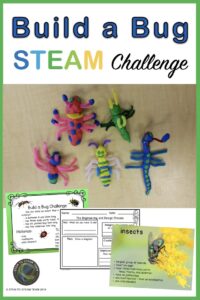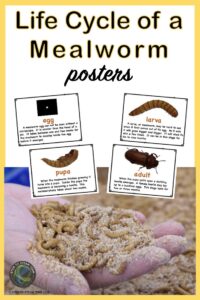,
Learning About Insects
Most kids are fascinated by insects! The estimated number of insect species in the world is 900,000, so it should be easy for students to find one that they would like to discover more about.

Overview of Insects
It’s fun to start with phenomena like a picture of a strange insect. I particularly like this photo I took of a walking stick that I saw. Better yet, bring in an interesting insect that you have captured! First, let the kids observe and draw their own conclusions about what they are looking at. In fact, most students will know it’s an insect. If they do, ask them to prove it! As a result, students may say things such as “It has six legs.” or “It flies.” It’s a good time to ask questions like, “Do all insects have six legs?” and “Do all insects fly?” After that, I read them a book about insects. There are so many good ones! Lastly, I hang this mini-poster in my classroom, so students can refer back to it (click image to download).
Researching Insects
After we have learned the basics about insects, students pick an insect that they would like to learn more about. I give them the choice to work alone or with a partner for this project. The first step in this process is to get them to look at as many insects as they can. I take out books about insects from the library and let kids look through them. They also look at images of bugs on computers. Once they have selected the insect, they begin their research. Students can use books and search online. Bug Facts is a good website to use. Besides having insect fact sheets on a variety of bugs, this site has some free worksheets you can download. In addition, the National Geographic website has a good section on bugs for kids.
My students are required to
- draw and label a diagram of the insect
- draw and label the insect’s life cycle
- write about adaptations the animal has
- find out the typical information such as where the animal lives and what it eats
After students finish finding out this information, they put it in a booklet and share it with the class. Students find it so much more engaging than writing a regular animal report.
Create an Insect STEM Challenge
I save this fun challenge for the end of our unit. Students are given clay, toothpicks, pipe cleaners, and a ruler. They are asked to build an insect that is between 6 and 12 cm long. For older students, leave it at that. Their finished insect can be used as an assessment. Do they have all the appropriate body parts? Some of the appropriate parts? For younger children, I post the challenge. Can you build a bug that:
- is between 8 and 12 cm long
- has three main body parts: head, thorax, and abdomen
- has six jointed legs 5 cm long
- has two antennae 3 cm long
Of course, adding the measurement component gets a little math in!
The Cicadas Are Coming!
In the spring of 2021, periodic cicadas will be emerging in vast numbers! These large insects are only here for a short time, but their size is frightening and their noise is eerie. To learn more, read; Periodic Cicadas: What’s the Big Buzz About?. Subsequently, you will be excited to teach your students about these amazing insects!
Of course, here are some of our insect-related resources.
And remember, it’s all science!










